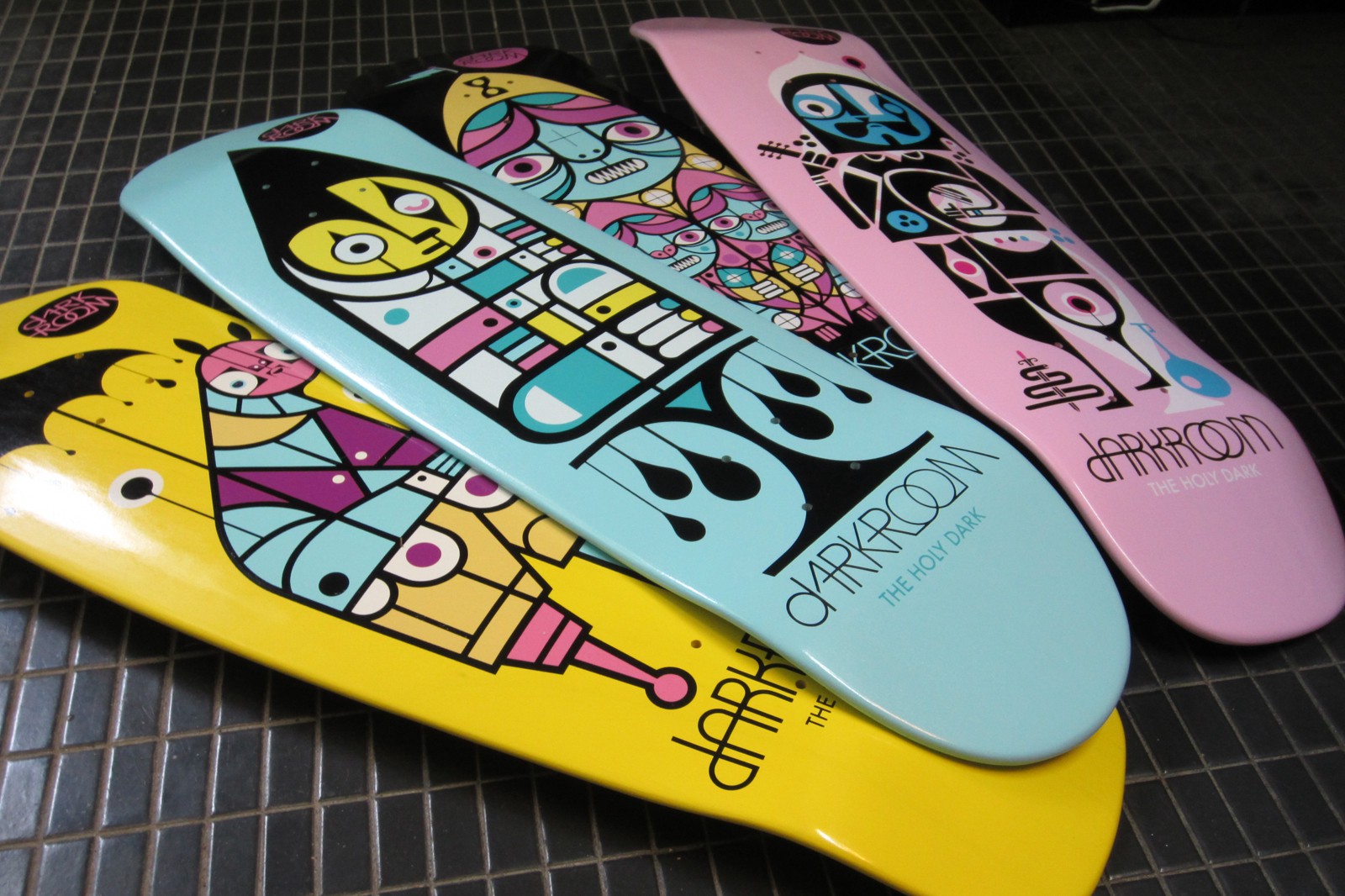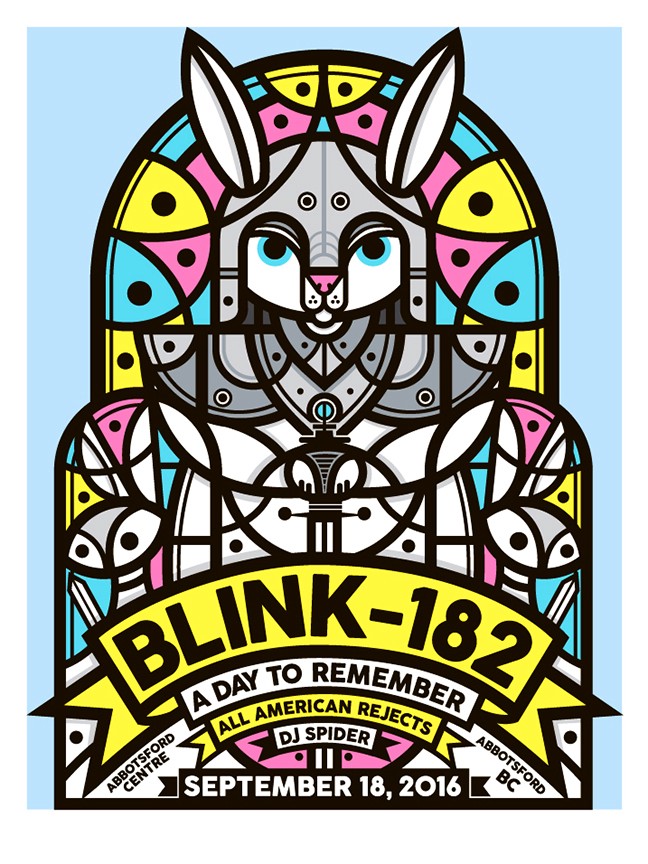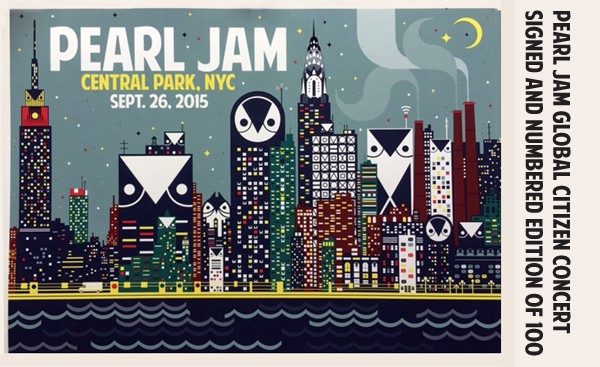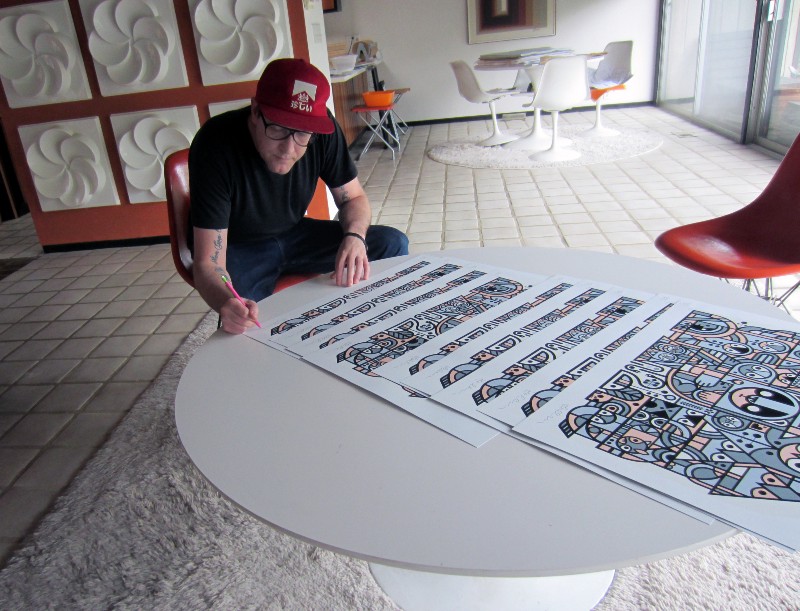
By: Don Pendleton
My Background:
I grew up in Ravenswood, West Virginia. Which is a very small town right on the Ohio River. My dad was a steel worker who would come after work and paint at the kitchen table after his shift. I would just watch him and eventually I started to paint and draw as a response to seeing him do it. At 14, I got into skateboarding after going on a trip to Virginia Beach and getting exposed to modern skateboards. Between the influence of my dad’s art and introduction to skateboarding, that’s really how my whole world started, back in 1985.
At the time, I did not know that’s what I’d like to do professionally, I just knew that I loved doing both art and skateboarding. I thought, if I had the opportunity to decide what I wanted to do for a living, it had to be something fun, something that I enjoyed. Art and skateboarding were the only two things I had invested a lot of time in and really felt connected to. In the back of my mind, I hoped to be able to pursue either, but coming from a small town, art and creativity weren’t very common. It didn’t seem like that was the way it was going to go. I was just doing something that I really loved and getting paid for either was the furthest from my mind.
Biggest Influences:
My biggest influences were always skateboarders who were artists. That was a major distinction and was drawn to the fact that a lot of these skateboarders did their own graphics. They were skateboarders first and foremost, but they also found a way to involve art through the process of marketing and advertising. Mark Gonzales, Neil Blender Natas Kaupas and John Grigley, where all pros who I looked up to, who were also amazing artists. I was exposed to their art before I was ever exposed to fine art or graphic art.
Growing up in the era I did, skateboarding was never considered a sport. It certainly required athletic ability, but it was truly more of an art than a sport. There were no rules, regulations or coaches. You didn’t have to wear pads, equipment or uniforms. That’s why I was drawn to it. I didn’t want to play a sport. I didn’t want to be on a team. If you’ve got that mentality, that you want to work on your own and advance on your own, where you are responsible for how well you do individually, you can see why people skateboard as a form of expression. That’s exactly what art is.

Finding My Style:
The first job that I got as a paid artist was working at a newspaper. I was doing a lot of layout, page design, graphics and illustrations for stories. I had to turn things around very quickly. My style was in-part dictated by the pace at which I was working. Everything became stylized and more abstract than sitting down and drawing something that was literal. I then got a job at a skateboard company by chance. It was very much the same thing — doing a lot of work in a short amount of time. Between the influences I had through skateboarding, the artists that came along before me and the amount of work I was doing, that established what my style became eventually.
I’ve always thought that art should be an extension of yourself; that there should be a lot of yourself put into it. Whatever you have going on in your head, it has to come out in a way that is unique to your interpretation. I believe style is a language…it should be natural, it’s how you communicate. It should evolve over time just like other parts of your life. I’ve always strived for my work to be like that..a bit abstract and distorted, but with identifiable aspects.
Sources of Inspiration:
It’s a little bit of everything. Sometimes it’s good stuff and sometimes its difficult stuff. A lot of my art is influenced by animals, insects and the patterns you see in nature. There’s this symmetry and balance to everything that occurs naturally, you just have to look for it. Then add in some old horror movies and the books that I read and it ends up creating these ideas in my head that I process visually. I end up putting that into shapes and colors instead of words.

My Creative Process:
I learned from a High School teacher (Mrs. Anderson, best art teacher ever) to always keep a sketchbook. It ends up becoming a diary or a journal more than just a place where I draw. I write down a lot of ideas and concepts. It’s little bursts of things that just pop up in my head. In the evenings, I draw and try to make sense of that stuff. Everything starts in the sketchbook and it evolves from there. Sometimes I use a computer and sometimes I use a canvas, but it all starts by hand in the book.
Where it goes from there will vary. Some things I can produce very quickly, then there are others that have a lot fine lines and detail. If it’s an elaborate painting with various shadows and layers, it can take me a couple of weeks to complete.

Working with Musicians:
Skateboarding and music were always connected from the earliest years for me. There were a lot of people in that scene who did both and they tended to influence one other (kind of like how art and skateboarding influence one another). I got introduced to a lot of bands that had roots in skateboarding and found that a lot of musicians were skaters from their earliest years. Jeff Ament from Pearl Jam was one of those people and he had purchased some paintings from me…he was a big supporter and that eventually developed into projects for his solo album and some Pearl Jam stuff.

Creating Bands Merch:
It depends. With Pearl Jam’s Lightning Bolt for example, that was a unique situation. Jeff Ament is an artist in his own right and he’s worked on so many of the bands accompanying art. His aesthetic became a big part of how the albums always looked. So this process was more collaborative where we shared a lot of ideas. It started very loose and developed over time since neither of us knew exactly what we wanted to do. After we worked together for a week, it became more clear what the vision was for each piece that would pair with a song on Lightning Bolt– to make each one unique and exploratory, but also to serve as a visual representation of each song and keep some sort of uniform artistic theme. Then there was some input from Ed (Vedder) and a designer named Joe Spix came in and worked with Jeff for a lot of the design details and layout.

When it comes to a poster or a sticker for a tour, the band gives me creative freedom. They trust artists with the direction and there are not too many rules. Some of those projects take a long time, sometimes I’ve got to work them out quickly. I did a poster for the Global Citizens concert that was the skyline of New York City. That took a long time because there were so many little pieces to it. A poster I did for a Cincinnati show in 2014 was done in one night. I sketched out the idea, designed the layout, then sat down at the computer and put it all together. After the designs are done, I send them off to their longtime merch manager (Chris Siglin, great guy) they produce the actual poster, sticker or T-Shirt. Fortunately, most of the bands I work with use really great printers with very high quality materials. The artwork is not just slapped on to a throw-away T-Shirt. It’s done very well. Chris has been doing this stuff a long time and puts a lot into how it’s produced.
Many of the bands I work with have such a supportive community around them. It’s overwhelming in a way to see how much acceptance they have for someone coming into a position of doing their merchandise. And a band like Pearl Jam has done so much for artists over the years with the opportunities they have given them — a platform and a voice and some visibility. They’re not bringing in artists and trying to get them to fit a mold; they’re allowing them to have their artwork seen by an audience that might not see it otherwise. They’ve helped a lot of artists develop and maintain careers by working with them. And that’s pretty awesome.

Skateboarding Today:
The mindset of growing up making my own t-shirts and building my own ramps, actively looking for new spots and that kind of thing, spurred my creativity. When you live an hour away from the nearest skate shop and break a kingpin, you start at an early age learning to be creative and all of those things stay with you as you get older.
I do still ride my skateboard…I’m just way more cautious these days. It takes a lot longer to heal than it used to and I worry about my wrists so when I go, it’s usually to a parking lot alone for manual tricks. I’ll always love the feeling of rolling around but the best way to describe it is that I used to be more of a skateboarder who did art once in a while and I’ve transitioned to an artist who rides a skateboard once in a while.
Riding a skateboard these days definitely clears my head because I usually do it alone in a parking lot the same way I did when I was a kid. But I’d say art and skateboarding trigger the same parts of the brain and for me, they’re almost interchangeable at this point. It’s just that art is way safer these days and just happens to be how I make my living.

Where You Can Find Me:
Right now I am focusing on painting. I had a busy year and worked with a lot of clients but it’s important to continue to develop your style and work and to experiment. You can’t just do art to meet deadlines…it’s important to develop ideas privately. So even though it seems like downtime, I stay just as busy but it’s for myself rather than a client. Then when 2017 rolls around, I’ll be fresh and start back in with some commercial projects.
My last print of the year (‘Return to the Kingdom’) will be released on December 6th through Poster Child Prints: www.posterchildprints.com
~Don Pendleton

www.twitter.com/pendledon (@pendledon)
www.instagram.com/pendledon (@pendledon)
In collaboration with Jeff Gorra — Artist Waves
If you recommend, please recommend below. Follow Artist Waves on: Medium, Facebook & Twitter.
Contact: jeffgorra@gmail


